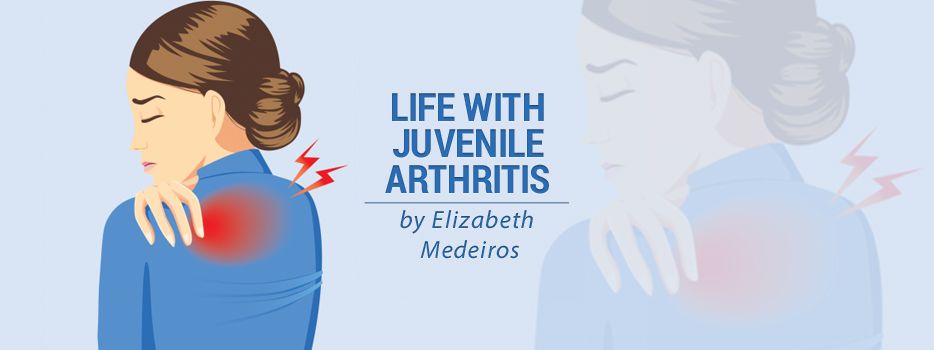Sundays are injection days. My routine isn’t a big deal anymore, although it once was. I defrost the pre-filled syringe, swab my stomach with some alcohol, inject the needle, press the plunger, and done!
Some people are surprised I need a shot every other week to control my juvenile-onset arthritis. But it’s been such a game-changer: The medicine has given me a fantastic quality of life. That said, it did take some time before I knew it was the right medication.
Getting better, little by little
A few winters ago, I was barely making it through each day, thanks to a never-ending flare-up. I went to school, came home, napped, ate dinner, went to sleep, and repeated. I always felt exhausted, but my sleep quality was atrocious due to my pain level. And my pain level was getting out of control — I was physically dragging, reeked of Bengay, and lived in a pair of pink compression gloves.
When I finally saw my rheumatologist, we decided it was time to start a new treatment. My doctor prescribed a new biologic, and no surprise, I didn’t notice any benefits for a while.
I started to become restless, worrying that the medicine wasn’t having any effect. But then I began to see small signs of improvement six weeks in, when it dawned on me that I didn’t need to nap as much. A few weeks later, I was up to watching TV on the couch and doing small tasks. My pain and fatigue reduced little by little over those months, until I finally shed my compression gloves and the worst of my symptoms in the spring.
These things take time
Medicines that target JA and try to reduce its activity, such as biologics and disease-modifying antirheumatic drugs, don’t work by relieving pain. Rather, they work to suppress the immune system, which reduces JA activity, and then they reduce pain and fatigue. This process is vital because these medicines can reduce damage to the joints, eyes, and other body parts. But it can take a while, and you may not see any effects immediately, the way you would with pain medicines or steroids.
Sometimes, progress will be slow. It might even seem like nothing is happening at times, which is frustrating and discouraging. But try not to become discouraged, and look for small improvements over time.
Writing down your child’s symptoms while trying new medicines or during challenging times is always a great idea, but it might be overwhelming at first. After all, what is essential to include? Beyond listing daily medication and a pain rating, it’s helpful to have benchmarks.
The benchmarks don’t have to stay the same forever — you can change them based on your child’s current state. For example, you might use your child’s ability to dress themselves without assistance or their level of exhaustion upon arriving home from school.
Holding on to hope
Although I’m on the right treatment now, I still get arthritis flares. And I still use the method of looking for small improvements; for example, feeling good enough to sit on the couch versus needing to lie in bed, determining if I need to use compression garments on a particular day, or tracking how many NSAIDs I had to take to feel reasonably comfortable.
During a flare, especially a long one, the small signs of improvement give me hope that things will start to turn around, even if it will take some time.
***
Note: Juvenile Arthritis News is strictly a news and information website about the disease. It does not provide medical advice, diagnosis, or treatment. This content is not intended to be a substitute for professional medical advice, diagnosis, or treatment. Always seek the advice of your physician or other qualified health provider with any questions you may have regarding a medical condition. Never disregard professional medical advice or delay in seeking it because of something you have read on this website. The opinions expressed in this column are not those of Juvenile Arthritis News, or its parent company, BioNews, and are intended to spark discussion about issues pertaining to juvenile arthritis.

